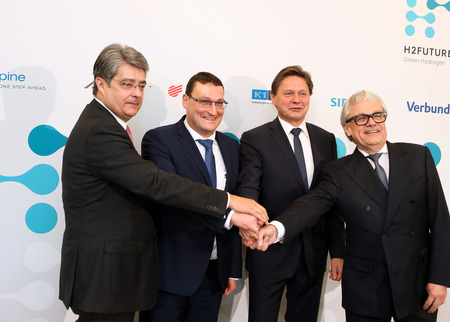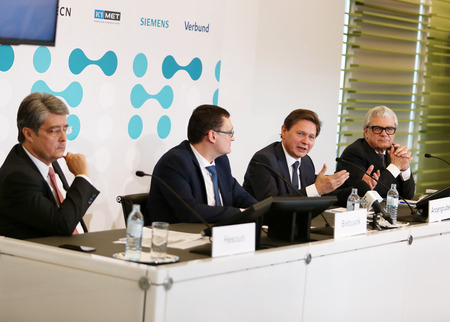The FCH JU has allocated about 12 million EUR in funding from the EU Horizon 2020 programme for implementing this project with the goal of producing green hydrogen. The green hydrogen for industrial use and for balancing the power reserve market will be produced in one of the largest and most modern electrolysers with proton exchange membrane (PEM) technology. The total project volume amounts to about 18 million EUR over the course of 4.5 years.
The key partners in the project are the companies voestalpine, Siemens and VERBUND. The plant will be built and operated on the premises of voestalpine in Linz. The green hydrogen generated there will be fed directly into the internal gas network, allowing the testing of the use of hydrogen in various process stages of steel production.The technology supplier for the proton exchange membrane electrolyser is Siemens. VERBUND, the project coordinator, will provide electricity from renewable energy sources and is responsible for development of grid-relevant services. Further partners in the project are the research institution ECN from the Netherlands , which is responsible for the scientific analysis of the demonstration operation and the transferability to other industrial sectors, and the Austrian transmission system operator APG, which will provide support in integrating the plant into the power reserve markets. The Austrian COMET Competence Center K1-MET provides its expertise in the operation of the plant and demonstrates the potential applications in the european and global steel sector.
With H2FUTURE, key questions about sector coupling will be handled, such as evaluating potentials and possibilities for using green hydrogen in various process stages of steel production. In addition, the transferability of this technology to other industrial sectors which use hydrogen in their production processes will be investigated. A further focus is integrating the responsive PEM electrolysis plant into the power reserve markets by developing demand-side management solutions, thus compensating for short-term fluctuations in the increasingly volatile power supply by means of load management for bulk consumers.


